In need of first day of school ESL activities? Look no further! This is a list of fun and easy games that every teacher of a multilingual classroom should know about.
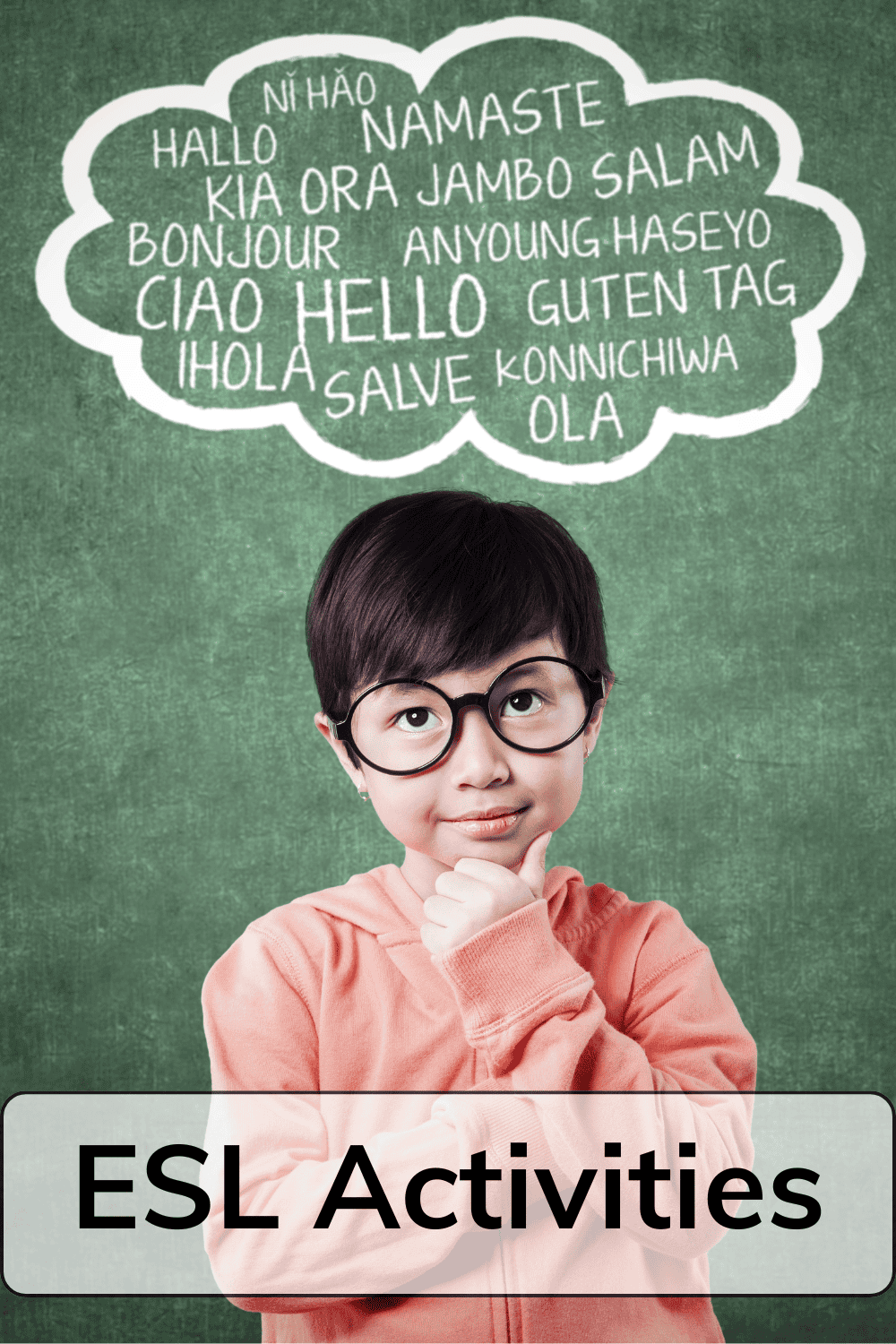
9 Fun ESL activities
The first day of class can be scary enough even when speaking the same language as your peers. Imagine not understanding what the teacher and your new classmates say some -or even most- of the time.
These activities are a great way to make it easier for multilingual or ESL students to understand what is happening and feel included. Encouraging students to use their native languages when needed (and then translating it later, if necessary, with their new friends or using an app like Google translate), shows them that this big part of their identity is not something to hide but a wonderful skill to use.
Tip for all of these activities: Use simple and clear language and repeat important points. And wherever possible: visuals, visuals, visuals.
1. Names Games
At the beginning of the year, it is important to learn each other’s names. What better way to do this than through play? This name game incorporates a little movement, so it could be a good way to energize in between seated tasks. The language focus turns this classic into a suitable ESL activity!
Materials needed:
– Ball or other object that can be passed around.
How to play:
Before your start, write the phrase “My name is…” on the board where everyone can see. Leave it there, so the ESL students can refer back to it when needed.
The kids stand, preferably in a circle so they can all see each other. The teacher starts and models what to do. First, say “My name is…”, and after saying your name, spell your name and jump at each letter (spelling can be difficult for English language learners, so they could be encouraged to spell in their home language). Then throw the object to the next person. It is their turn to say their name, and then spell it while jumping.
To add to it, you can tell them to say e.g. “Her name is…”, repeating the name of the person before them, and then saying “My name is…”. Or have them ask “What is your name?”, before throwing the object to the next student. Make sure to write these new words and phrases on the board as well.

2. Creating Classroom Rules
Starting the school year with clear, inclusive classroom rules is essential. Especially in a multilingual setting. Doing this together, including the ESL learners in the process, creates a collaborative, respectful and understanding environment from day one. Involving students in the rule-making process, can be an excellent way to promote a sense of ownership and respect within the classroom.
This EAL activity not only helps establish essential guidelines but also encourages language development and cultural exchange among students. But how do you do this when not everyone speaks the language of instruction? Ideally, an EAL teacher can join you in the classroom during this process, but we don’t always have this luxury. Don’t worry! Here’s a step-by-step guide to creating class rules while making it as accessible as possible for our ESL learners.
Materials needed:
– Large chart paper or a whiteboard
– Markers
– Sticky notes or index cards
– Visual aids (pictures representing different rules)
– Translation apps or bilingual dictionaries (if needed)
Intro
Write “Classroom Rules” on the board and give students time to use Google Translate (or do it for them on the DigiBoard, so everyone can see the languages represented in the classroom. Let’s be honest, this will most likely save you a bunch of time too). Then, discuss. Why do we need rules? Ask for some examples of where we have rules (e.g. at home, library, in traffic). What would happen if we didn’t have rules? Explain you’ll be creating classroom rules together, and since it involves everyone, it is important to create them as a whole class activity.
Brainstorm
Divide the class into small groups, mixing students with different language backgrounds to encourage collaboration. Give each group sticky notes and ask them to write down one rule they think is important for the classroom. Encourage them to write in their native language if they are more comfortable, and then work together to translate it into English.
Group Discussion
Bring the class together and have each group share their rules. Write these rules on the chart paper or whiteboard. Discuss each rule, ensuring that everyone understands and agrees that this is an important rule to have in class. Use translation apps or bilingual dictionaries to clarify any misunderstandings.
Finalizing the Rules
As a class, review all the suggested rules and narrow them down to a manageable list, ideally 5-7 rules. You’d be surprised what things they come up with sometimes! Love the input, but not everything is suitable and can make it to the list. When decided, ensure these rules are phrased positively and are easy to understand. Write the final rules on a large poster and have all students sign it to show their commitment.
Making it visual
Visuals are helpful to most students, but especially for our EAL and ESL learners. Ask students to draw a picture representing each rule. For example, a picture of children raising their hands to speak can illustrate the rule “Raise your hand before speaking.” Display these drawings around the classroom as visual reminders
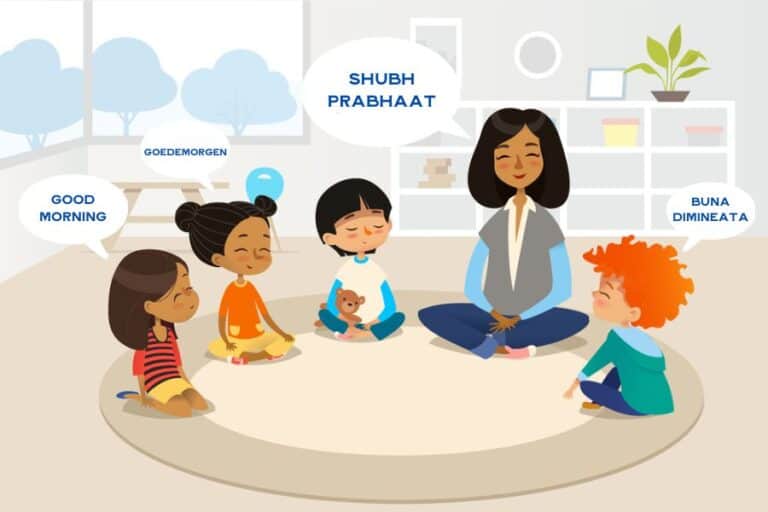
3. ESL morning routine
Research shows that when students are greeted at the door of the classroom, with the intention to connect with them before they step inside, it creates a sense of belonging. This in turn, has shown to improve academic engagement significantly and reduce unhelpful behavior. Sounds like a great opportunity to me to have some fun and check-in with each other first thing in the morning! Read on for 2 warm-up activities that will brighten your morning.
Drawing morning routine words
Materials needed:
– Papers cut in squares (or whichever shape you want the symbols to be)
– Pencils and markers
First, young learners might like to act out or draw the “morning routine words”. E.g. if you do the weather-watcher routine you can have them draw the most common situations like rainy, cloudy, sunny. Or, it could be the daily activities (e.g. circle time, math, language, free play, lunch, music, etc.) that you will put on the board to show the schedule of the day. Kids love to see their own work used in class! This activity discusses the most common words that the ESL learners will hear on repeat in the mornings and throughout the day. Having self-made visuals representing this new vocabulary is so helpful!
“GOOD MORNING” IN WORLD LANGUAGES
Second, greet each other in the languages represented in the entire class. You might need some help here from the parents. Write the words for “good morning” on the board to practice for the week. It shows the children their home languages matter and have a space in the classroom. When the first person says “good morning” in their home language, the class replies by saying the word and the name of the person. For example: “Goedemorgen, (name of class)”. And the class says: “Goedemorgen, Miss Valk”. Then the next person greets the class and the class replies, and so on.
We saw just how meaningful this ritual can be when home learning during the pandemic. Students put their stuffed animals in a circle and greeted them in their friends’ languages! It was so beautiful to see!
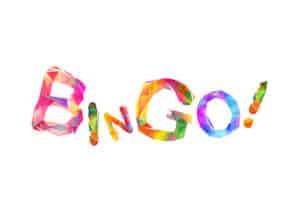
4. ESL Bingo - Find Someone Who
“Find Someone Who” Bingo is always a great activity for the first day of school to help ESL learners bond and practice their English skills. This ESL activity encourages students to communicate and learn interesting facts about their classmates, fostering a sense of community from the start. How comforting is it to be new in class, having to make new friends, and then discovering how many other people share common interests, such as your favorite food, sports, having dogs, or you name it?
Many Bingo cards only have words on them, while it is so important for ESL learners to have visuals (as well as children with dyslexia, and many others – and let’s be honest, pictures make things look a whole lot more fun!). Find one of my Bingo cards here. Let’s get started!
Materials Needed:
– Bingo cards with visuals
– Pens or pencils
– Whiteboard for sentence starters at the front of the class
How to play:
Instructions
Explain the rules in simple English. Students must circulate around the room, asking their classmates questions to find someone who fits each image. When they find a match, they write the classmate’s name in the corresponding square (great way to sneak in learning the students’ names). Encourage them to use English sentences. Write some sentence starters on the board for them to see and practice. For example: “Do you like…?”, “Yes, I like…too”, or “No, I don’t like…”. This not only builds language skills but it also helps with social interaction.
Who wins?
The first student to fill a row, column, or diagonal shouts “Bingo!” and shares the names and facts they collected.ESL
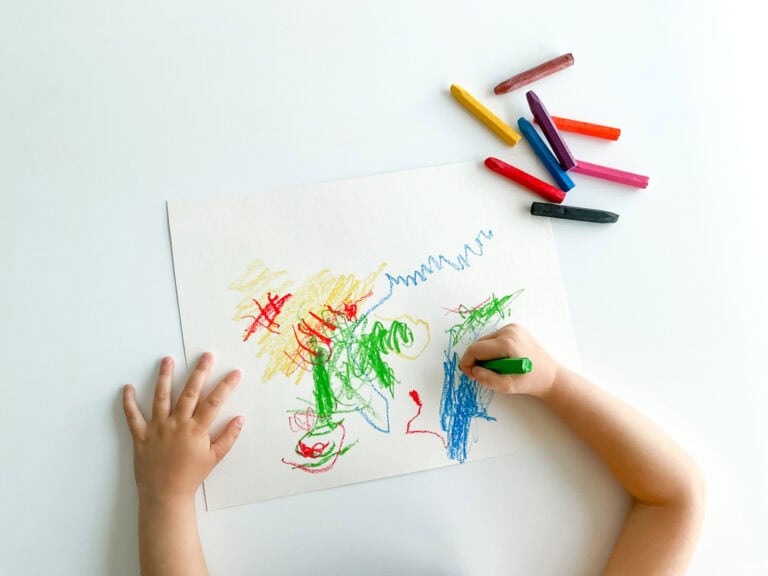
5. Drawing Summer Vacation
A fun way to discuss the summer vacation, is by drawing it! It is one of the best ways for students to show the main idea of their story without needing all that language. As a teacher, you can of course ask follow-up questions and support them in sharing more details.
Needed:
– Paper and (colored) pencils
– Erasers
How to play:
Explain that they are drawing their summer vacation (either their favorite memory, or maybe multiple things). You can model it by making a quick doodle on the board and use simple sentences explaining the moment during your vacation. You could write “I went…” and other common phrases you hear yourself say on the board, for the ESL learners to fall back on when listening and when sharing their story themselves later.
When finished, gather the class on a carpet or circle, anywhere “cozy” if possible. This can help create a safe space to share, where everyone can clearly see the drawing, without anyone needing to stand in front of the class with all eyes on them. Can they tell something about their drawing/vacation? Find connections in the group. Who had a similar experience? Or maybe likes the same thing?
Advanced students can write a more detailed description on the back of their paper.
Extra (use it as a language activity): have them write the words in their drawing describing what they made. Do this in English if possible, otherwise in their home languages (good to get an idea of their vocab and written language skills in any of these languages) and share. If students drew the same things (pool, sun, brothers/sisters etc.) you can turn it into a little language lesson. What are the connections they can make between the words? Are they similar in different languages?

6. Guessing Game For Kids
Another classic ESL activity is a guessing game! This can be a little bit challenging if students do not understand any English, but I’ve got you covered! A few suggestions on how to make it more ESL friendly are listed below. For this game I thought of guessing favorite food or hobbies, but this could be any topic you want.
Materials Needed:
– Small pieces of paper
– Pens or pencils
– A hat or a bowl
– Visual aids (pictures of common hobbies and foods)
– Translation tools or bilingual dictionaries
How to play:
Make it visual, by e.g. showing a slide with common hobbies (e.g., playing football, drawing) and favorite foods (e.g., pizza, ice cream). This helps ESL learners understand the activity and choose a hobby or food to write about.
Start
Give each student a piece of paper. Ask them to write down either their favorite hobby or favorite food without revealing it to anyone else.
Collect all the cards in a hat or bowl.
Guess what?
One by one, draw a card and read the hobby or favorite food aloud. The class then takes turns guessing which classmate the card belongs to. Encourage them to ask questions in English to help narrow down their guesses (e.g., “Do you like sports?” or “Do you prefer sweet or savory foods?”).
Once the class guesses correctly, the student reveals themselves and shares a bit more about their hobby or favorite food.
Adjusting to ESL learners
Buddy System: Pair non-English speaking students with bilingual classmates or a “buddy” who can help them understand the instructions and participate in the game. This buddy can also assist in asking and answering questions during the game.
Modeling: Demonstrate how to ask and answer questions with a few examples. Show how to use the visual aids to communicate their hobbies or favorite foods non-verbally if needed.
Simplified Questioning: Encourage students to use simple yes/no questions (e.g., “Do you like pizza?”) and provide a list of basic questions translated into the students’ native languages to facilitate easier communication.

7. Scavenger Hunt
First day activities are not complete without a good scavenger hunt. This version is a good idea at the start of the new school year, as it focuses on finding and naming common objects in the classroom. This makes it a whole lot easier for ESL students to communicate once they know what things around them are called. Not to mention, a scavenger hunt guarantees a lot of fun!
Note that this activity requires some extra prep for photos, but it’s worth it! I have noticed it is helpful for especially younger learners to see the photos of objects exactly how they are in the classroom. And you can use this list for follow up activities!
Tip: it’s great for EAL students/ESL students to have this sheet accessible so they can learn the words that go with the pictures and use it in a meaningful context. Even better would be if these objects are used in a follow-up activity in which they are encouraged to use the newly learned vocabulary.
Materials Needed:
– Pre-prepared scavenger hunt lists with images of objects (photos of items in the classroom)
– 1 Answer sheet (digitally)
– Clipboards (optional)
– Pens or pencils
Preparation: Before the lesson, take photos of various objects around the classroom (e.g., a chair, a clock, a book, pencils). Create a scavenger hunt list with these images and the corresponding English words. Print enough copies for each student or pair of students. Save one with the “answers”, and another with only the images so the students can fill in the words in the empty space next to the image. The one with the answers can later be shown on the DigiBoard for example, so the children can check their answers and spelling.
How to play:
Instructions
Explain the activity and show them an example of the scavenger hunt list and demonstrate how to find an object, match it with the photo, and write down its name.
Let’s Hunt!
Distribute the scavenger hunt lists. Allow students to work individually or in pairs (e.g. paired based on mixed English skill levels) to find the objects in the classroom. As they find each item, they should write its name next to the picture on their list.
Once all the items have been found, gather the students and review the objects together. Use this time to practice pronunciation and reinforce the vocabulary.
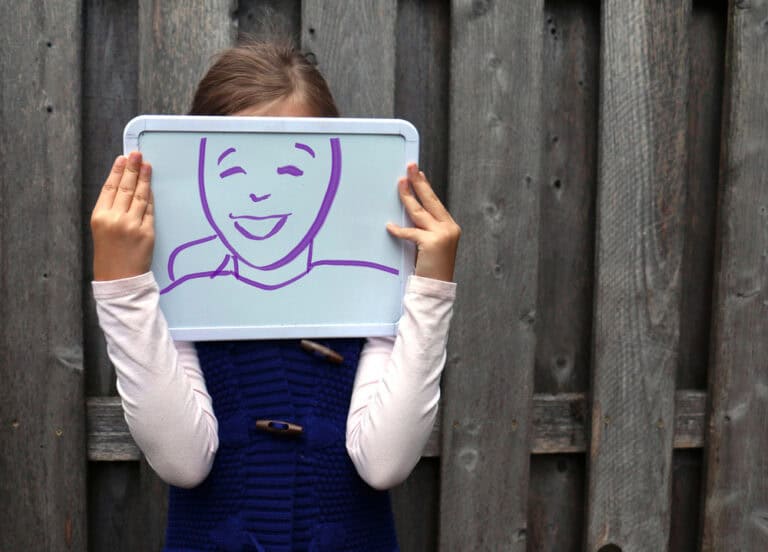
8. Self-Portrait Drawing For Kids
A self-portrait drawing activity is an excellent way for ESL students to express themselves creatively while practicing English vocabulary related to physical appearance and personal interests. This activity helps students build confidence in their language skills and fosters a sense of community as they share their drawings with the class.
Materials Needed:
– Paper
– Pencils, crayons, or markers
– Mirrors (optional)
– Vocabulary cards with words related to physical appearance and personal interests (with images)
– Examples of self-portraits (e.g. from famous artists or previous students)
How to play:
Introduction
Begin by introducing the concept of self-portraits. Show examples of self-portraits from famous artists or previous students to inspire and motivate the class. Discuss the basic vocabulary related to physical appearance (e.g., eyes, hair, smile) and personal interests (e.g., favorite activities, hobbies).
Instructions
Explain that each student will draw a self-portrait. If possible, provide mirrors so students can look at themselves while drawing. Encourage them to include details that represent their personal interests and unique features.
Drawing
Hand out the paper and drawing materials. Allow students enough time to create their self-portraits. Walk around the classroom to offer help and positive reinforcement, using the vocabulary cards to prompt students to describe their features and interests in English.
Sharing
Once the drawings are complete, have each student present their self-portrait to the class. Encourage them to use the new vocabulary to describe their drawings. For example, “I have brown eyes and short hair and I like to play soccer”. If needed, write some of these sentence starters on the board.
Display
Create a “Self-Portrait Gallery” on a classroom wall or bulletin board. Display the drawings along with short descriptions written by the students. This celebrates their work and is a personal reminder of the vocabulary they have learned.
9. Kindness Circle
The “Circle of Kindness” activity is a wonderful way to make ESL learners feel included and valued in a multilingual classroom. This routine allows students to acknowledge each other’s accomplishments and share kindness in their native languages, fostering a sense of community and respect for cultural and linguistic diversity. It might be harder to find something to say on the first day, but it is a great introduction to the regular routine. Encouraging to give shout-outs throughout the week will help them focus on the positives and it’s an amazing team-building exercise.
Introducing it on the first day can also focus on collecting the sentences in their native languages. What does it mean to be friendly/give compliments/positive feedback, etc.? Make sure to have a list of things to say in all the languages represented in the classroom by the end of the week, when there will be an official first “Circle of Kindness”.

Materials Needed:
– A talking stick or special object (optional)
– A multilingual chart with common compliments and phrases (e.g., “Great job!”, “You are kind!”, “Well done!”, “You are a good friend!”)
– How to play:
Introduction to the Routine
Explain the purpose of the “Circle of Kindness” activity. Emphasize the importance of recognizing each other’s efforts and sharing positive feedback. Introduce the concept of using multiple languages to celebrate diversity.
Creating the Multilingual Chart
Collaborate with students to create a chart with common compliments and positive phrases translated into the languages represented in the classroom. Display this chart prominently in the classroom for easy reference. There is a good chance you’ll need the parents’ help, especially with younger learners (a great opportunity to have a talk about if and how home languages are valued at home!).
Shout-Outs
Arrange the students in a circle. Use a talking stick or a special object that can be passed around to indicate whose turn it is to speak.
Start the activity by demonstrating how to give a shout-out. For example, “I want to give a shout-out to Maria for helping me with my math homework. You are very kind! (Eres muy amable!)” Encourage students to use their native language for part of the shout-out, referring to the multilingual chart if needed. Maybe they’d like to learn how to say it in a friend’s language!
Pass the talking stick around the circle. Each student can give a shout-out to a classmate, acknowledging their accomplishments or sharing a kind compliment. Encourage them to use a mix of English and their native language.
Circle of Kindness Routine
Incorporate the “Circle of Kindness” into a regular routine, such as at the end of each week. This consistency helps build a supportive classroom environment and reinforces the use of positive language. Of course, you can also choose to have children give a shout-out at any time you feel is appropriate, but establishing the routine first is helpful.


Leave a Reply